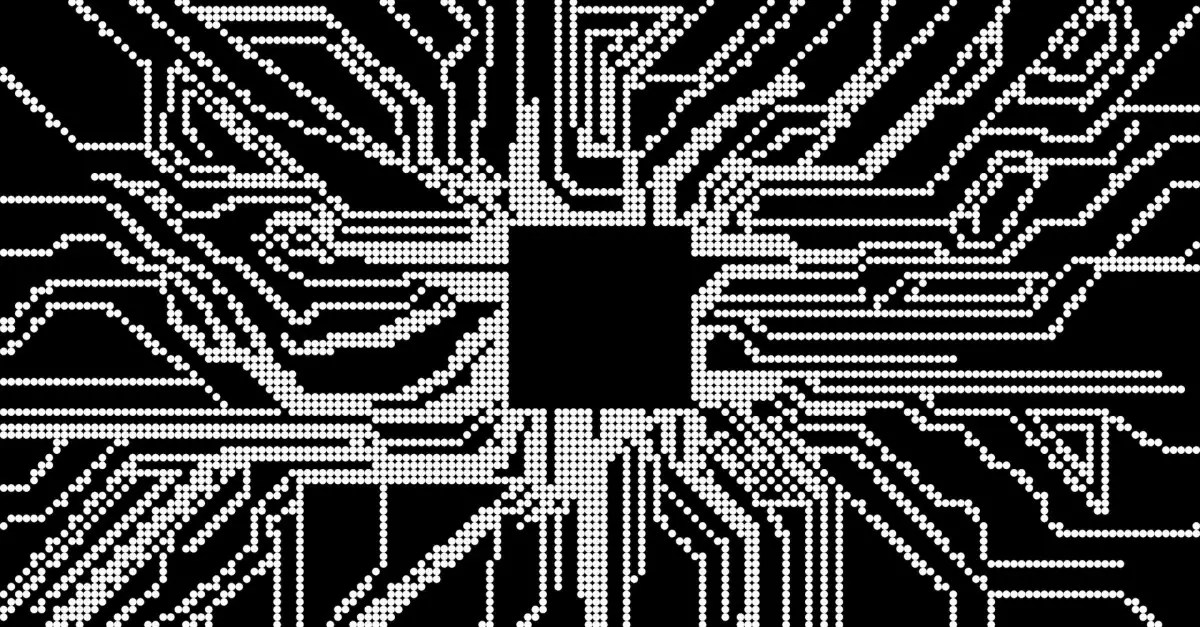In a stunning display of marketing prowess, OpenAI ventured into the public eye with its first-ever Super Bowl advertisement. This signifies not only a milestone for the company but also an invitation for broader societal engagement with artificial intelligence. With this 60-second commercial, OpenAI aims to contextualize its technology within the grand arc of human innovation, much akin to the defining breakthroughs that have shaped civilization. Such a strategic move underscores the critical role of AI as a transformative tool, one that resonates with both tech enthusiasts and individuals unfamiliar with its complexities.
The advertisement employs a visually captivating pointillism-inspired animation to narrate humanity’s journey through significant technological leaps. It elegantly conveys how various inventions, from prehistoric fire to modern marvels like DNA sequencing, have played pivotal roles in human evolution. By transitioning from these historical milestones to showcasing practical AI applications—such as ChatGPT drafting business plans and tutoring in various languages—the commercial not only chronicles the past but also stirs excitement for the future. This thoughtful narrative aims to invite viewers to consider AI not as something distant and unfathomable, but as an accessible tool that can enhance day-to-day life.
In developing the Super Bowl spot, OpenAI’s Chief Marketing Officer, Kate Rouch, has shifted the focus away from artificial general intelligence (AGI) and superintelligence—areas often surrounded by skepticism and fear. Rather, the emphasis lies on enhancing practicality and demonstrating real-world applicability, aligning with Rouch’s belief that “authenticity really matters.” This strategic pivot is crucial, especially given the wide audience that Super Bowl advertising attracts, consisting largely of viewers who might be completely detached from the technical intricacies of AI. As Rouch aptly puts it, the aim is to communicate in ways that resonate with a plethora of viewers—many of whom are likely encountering AI concepts for the first time.
Interestingly, while the creative process employed OpenAI’s text-to-video AI, Sora, to explore different artistic directions, the final product was solely crafted by human artists. This decision was deliberate and significant; it emphasizes that at its core, AI is an extension of human creativity rather than a replacement for it. Rouch highlights this balance by stating, “This is a celebration of human creativity and an extension of human creativity.” By centralizing the human element in the advertisement, OpenAI reinforces the message that they do not aim to overshadow human capabilities but rather to empower them through AI.
OpenAI’s foray into Super Bowl advertising not only represents a bold marketing strategy but also reflects the immense pressures facing the company. As competitors like Google and Meta ramp up their own AI endeavors—evidenced by their parallel Super Bowl advertisements—OpenAI recognizes the urgency to differentiate itself. With aspirations of a staggering $300 billion valuation and projected revenues hitting $11.6 billion, the stakes could not be higher. The company hopes this prime-time exposure will strengthen its marketplace position, especially following Google’s missteps in AI advertising and the backlash it faced over perceived inauthenticity.
As the public discourse around the societal ramifications of AI continues to expand, OpenAI faces the formidable challenge of steering conversations toward a positive outlook. Rouch’s insistence on the “transformative power of this technology” speaks to a larger vision. By positioning AI as a tool for societal advancement, OpenAI encourages viewers to not just witness, but to engage actively with the capabilities that contemporary technology provides. It encourages a proactive exploration in what can be achieved with AI, urging society to harness this revolution for collective progress.
As we embrace this “dawn of the intelligence age,” the Super Bowl advertisement serves as a clarion call to action—a moment to reflect on what has been achieved and to envision the vast possibilities that lie ahead, making it clear that the time to participate in the evolution of technology is now.


Leave a Reply